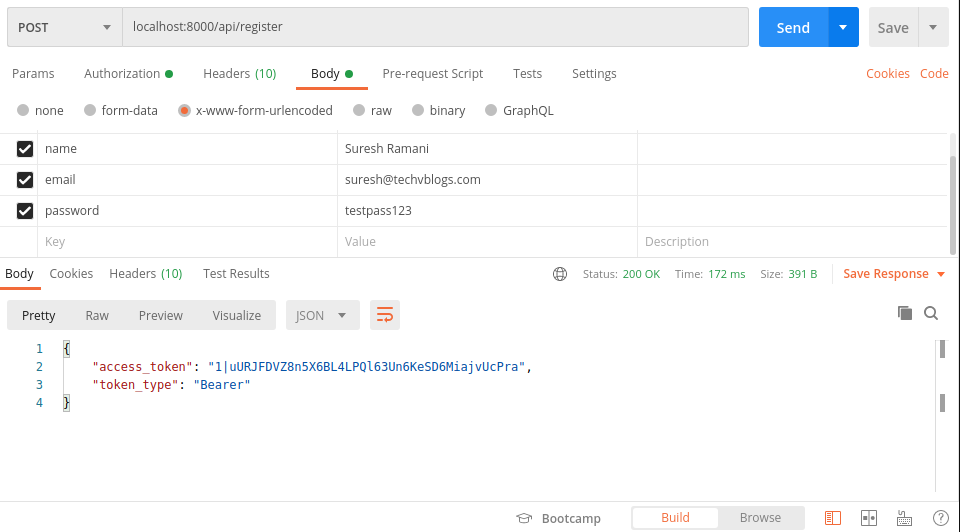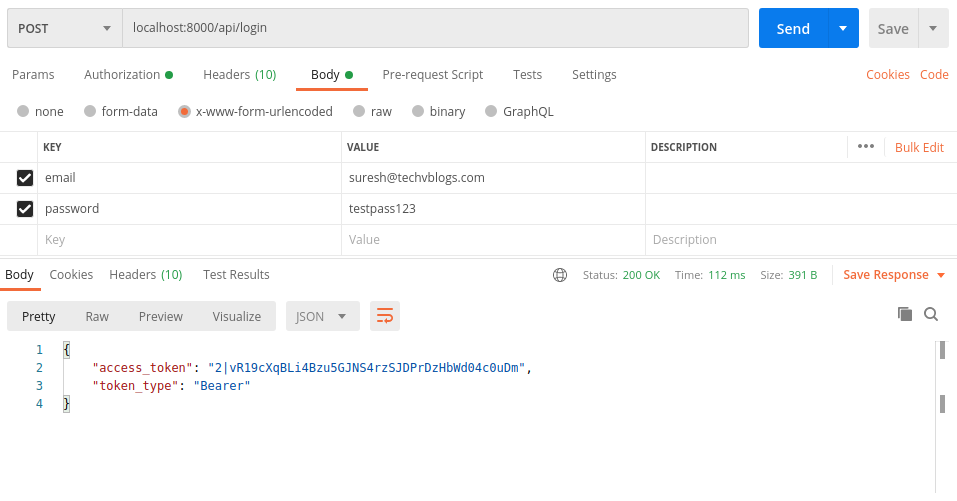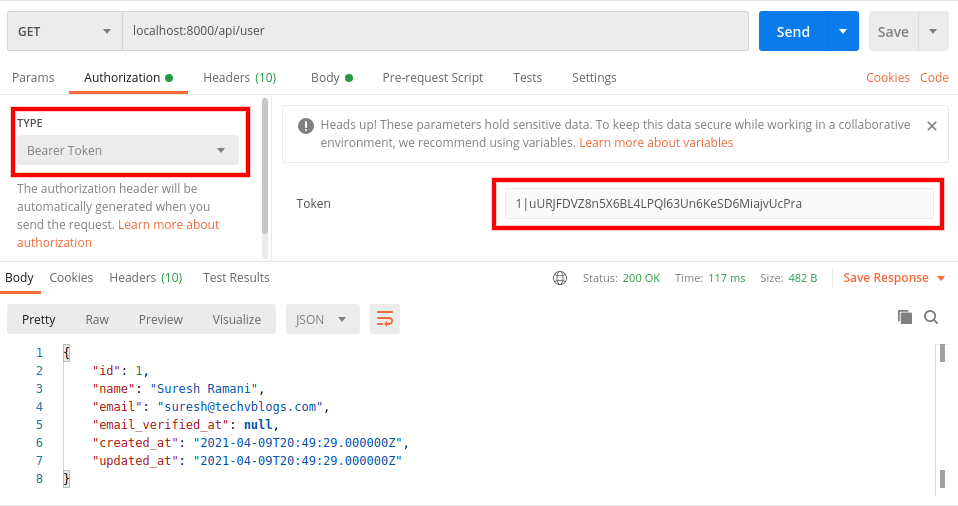https://res.cloudinary.com/techvblogs/image/upload/v1617996645/banner/rjswos1leslvm0h4asbm.png
What is Laravel Sanctum?
Laravel Sanctum provides a featherweight authentication system for SPAs (single page applications), mobile applications, and simple, token-based APIs. Sanctum allows each user of your application to generate multiple API tokens for their account. These tokens may be granted abilities/scopes which specify which actions the tokens are allowed to perform. Here are some reasons you might want to choose Sanctum over Passport:
- Passport is implemented with OAuth2 authentication. If you are not using that, then Sanctum is your go-to for issuing API tokens.
- Sanctum is a featherweight, meaning it is light and simple to implement.
- Sanctum works with SPAs (Single Page Applications like Vue, Angular, and React) and supports mobile application authentication.
Getting started
First, open Terminal and run the following command to create a fresh laravel project:
composer create-project --prefer-dist laravel/laravel larasanctum-apior, if you have installed the Laravel Installer as a global composer dependency:
laravel new larasanctum-apiSetup Database Detail
DB_HOST=127.0.0.1
DB_PORT=3306
DB_DATABASE=<DATABASE NAME>
DB_USERNAME=<DATABASE USERNAME>
DB_PASSWORD=<DATABASE PASSWORD>Read Also: Firebase Push Notification Laravel Tutorial
Installation and Setup
Now would be a good time to start the Laravel application to make sure everything is working as expected:
cd larasanctum-api
php artisan serveLet’s add Laravel Sanctum to it. First, we need to install Laravel Sanctum into our application using Composer:
composer require laravel/sanctumNext, we’ll publish Laravel Sanctum configuration and migration files using the following command:
php artisan vendor:publish --provider="Laravel\Sanctum\SanctumServiceProvider"Now, run the database migrations:
php artisan migrateTo use tokens for users, add the HasApiTokens trait inside the User model.
Open the app/Models/User.php file and add the following modifications:
namespace App\Models;
use Illuminate\Contracts\Auth\MustVerifyEmail;
use Illuminate\Database\Eloquent\Factories\HasFactory;
use Illuminate\Foundation\Auth\User as Authenticatable;
use Illuminate\Notifications\Notifiable;
use Laravel\Sanctum\HasApiTokens;
class User extends Authenticatable
{
use HasFactory, Notifiable, HasApiTokens;
}Setup Middleware
Edit your app/Http/Kernel.php file to add Sanctum’s middleware into your API middleware group.
'api' => [
'throttle:api',
\Illuminate\Routing\Middleware\SubstituteBindings::class,
\Laravel\Sanctum\Http\Middleware\EnsureFrontendRequestsAreStateful::class,
],Building the API
Let’s start with registering for an account. In your terminal create the controller responsible for authentication by running the following Artisan command:
php artisan make:controller AuthControllerNow open the routes/api.php file to create the route for registering a user:
use App\Http\Controllers\AuthController;
Route::post('/register',[AuthController::class,'register']);Open app/Http/Controllers/AuthController.php and create a method to register a user:
use Illuminate\Support\Facades\Hash;
public function register(Request $request){
$post_data = $request->validate([
'name'=>'required|string',
'email'=>'required|string|email|unique:users',
'password'=>'required|min:8'
]);
$user = User::create([
'name' => $post_data['name'],
'email' => $post_data['email'],
'password' => Hash::make($post_data['password']),
]);
$token = $user->createToken('authToken')->plainTextToken;
return response()->json([
'access_token' => $token,
'token_type' => 'Bearer',
]);
}First, we validate the incoming request to make sure all required variables are present. Then we persist the supplied details into the database. Once a user has been created, we create a new personal access token for them using the createToken() method and give the token a name of authToken. Because createToken() will return an instance of Laravel\Sanctum\NewAccessToken, we call the plainTextToken property on the instance to access the plain-text value of the token. Finally, we return a JSON response containing the generated token as well as the type of the token.
Next, create a route for the login user, open routes/api.php, and update the following code into a file:
Route::post('/login', [AuthController::class, 'login']);Now add login method to AuthController
use Illuminate\Support\Facades\Auth;
public function login(Request $request){
if (!\Auth::attempt($request->only('email', 'password'))) {
return response()->json([
'message' => 'Invalid login details'
], 401);
}
$user = User::where('email', $request['email'])->firstOrFail();
$token = $user->createToken('authToken')->plainTextToken;
return response()->json([
'access_token' => $token,
'token_type' => 'Bearer',
]);
}Add the routes that require authentication inside the middleware group. As the login route doesn’t use the authentication middleware, it goes outside the middle group.
routes/api.php
<?php
use Illuminate\Http\Request;
use Illuminate\Support\Facades\Route;
use App\Http\Controllers\AuthController;
Route::post('/register',[AuthController::class,'register']);
Route::post('/login', [AuthController::class, 'login']);
Route::middleware('auth:sanctum')->get('/user', function (Request $request) {
return $request->user();
});Now, All sets to go, and Let’s test API routes.
Create a new User
 Login User
Login User
 Get Authenticated User
Get Authenticated User

Thank you for reading this article.
It’d be a good idea to follow along with the simple demo app that can be found in this GitHub repo.
Read Also: Implement Passport In Laravel
Laravel News Links